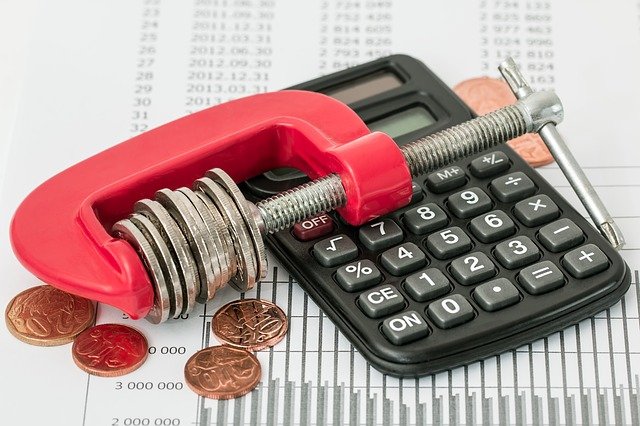

Research conducted by the Financial Planning Institute of Southern Africa (FPI) points out that South Africa is one of the countries in the world where the household debt level is unacceptably high when measured against disposable income.
This trend has extended into the corporate world. However, unlike personal debt, corporate debt may not be a bad thing, when used appropriately. Last week, we looked at the drivers of rising corporate debt levels, today we answer the question.
Ability to repay debt has deteriorated for all companies, except very large ones
The report points out that for most groups of companies, rising debt has accompanied deteriorating ability to repay. The ratio of net debt to earnings before interest, taxes, depreciation, and amortization (EBITDA) has been increasing since early- and mid-2010s. Worryingly, in the pandemic earnings dropped even as debt increased, thereby denting companies’ ability to repay debt. For example, EBITDA declined by 18.2% for the 501–1,000 cohort and by 16.7% for the 101–500 one in 2020. The top-10 cohort, however, appears to be better placed than others in its net-debt-to-EBITDA ratio.
In 2020, EBITDA declined the most for energy (42.7%)—most likely due to a sharp drop in oil prices last year—and industrials (33.8%). This, in turn, ensured that their net-debt-to-EBITDA ratios deteriorated sharply, given that net debt soared (figure 5). The rise in the ratio for industrials reverses the improvement since 2009. The oil industry witnessed a sharp drop in earnings in 2020 due to falling oil prices that year, likely contributing to declining net-debt-to-EBITDA for the overall energy sector. Oil also faces medium- to long-term growth challenges due to climate change and efforts worldwide to transition away from fossil fuels.
The report adds that the pandemic also dented companies’ ability to pay interest on their debt. The interest coverage ratio, a ratio of earnings before interest and taxes (EBIT) to interest expenses, fell for all cohorts other than the top-10 in 2020, with the quantum of decline being the highest for the 101–500 cohort. While low interest rates helped in keeping interest expenses in check for all cohorts last year, it was the sharp fall in earnings that dented some cohorts’ interest coverage ratio. For example, EBIT fell by 40.3% last year for the 501–1,000 cohort and by 28.5% for the 101–500 one. And, as with net-debt-to-EBITDA ratio, larger companies as a group seem to be better placed than their smaller counterparts in terms of interest coverage. For example, in 2020, the interest coverage ratio for the top-10 was 24.3, much higher than the 1.9 ratio for the 501–1000 cohort.
Among key sectors, information technology had the highest interest coverage ratio in 2020, unchanged from the previous year. The number, however, has gone down sharply over the years. The energy sector has witnessed a similar trend. With earnings being hit in 2020, most sectors saw declines in the interest coverage ratio. The energy sector was the worst hit.
The report points out that the question to ask here is whether this debt surge since 2010, including in 2020, has been matched by an increase in investments. If investments have grown in line with debt, it should be a positive trend for the economy. If not, this high level of debt may become a problem.
Capital expenditure hasn’t kept pace with debt, with 2020 being an especially bad year

Photo By: Nattanan Kanchanaprat via Pixabay
Data on investments by these 1,000 companies reveals that overall capital expenditure (capex) hasn’t kept up with debt growth. Between 2010 and 2019, for example, capex grew by 6.7% on average per year, lower than the corresponding growth in long-term debt (9.7%). And even as debt grew in 2020, capex fell by 9.4%—but there is quite a bit of variation within company cohorts. The top-10 group, which has led debt expansion, has also increased capex faster than others (figure 8). This group is the only cohort that increased capex amid the pandemic and that too at a healthy pace. Oddly, the 11–50 group, which like the top-10 contributed strongly to overall debt expansion between 2010 and 2019 (and 2020), witnessed slower capex growth on average during this period compared to 2000–2010.
Capex growth has been the highest since 2010 for consumer discretionary, information technology, and health care, while it has contracted for energy. In fact, capex fell by a staggering 38.3% last year for energy, a contrast to strong growth in long-term debt for the sector that year. Within the energy sector, oil is a special case—oil prices fell last year and there remains headwinds for the industry, such as climate concerns and potential reduction in commuting, as remote work trends continue.
So, is rising debt a problem? Not necessarily.
The report adds that the capex trend in 2020 could well give a misleading impression of the most important trends in economywide business investment and, therefore, a misleading impression of the direction of future productivity growth. First, capex includes investment in structures (which are not closely associated with productivity improvements, as well as in maintenance). Second, although business investment fell in the first half of 2020, the types of business investment most closely tied to productivity growth staged a remarkable recovery in the second half that has continued into the first quarter of 2021. For a more detailed picture of what new investments businesses are making (albeit without the size or sector detail), we turn to the US National Income and Product Accounts data. According to this government data, investment in structures was particularly hit hard in 2020 that continued into 2021. Since structures are not a type of investment closely associated with productivity improvements, a decline in this type of investment is not very concerning from the perspective of potential economic growth.
Two types of investments are mostly associated with the economy’s productivity growth—investment in information processing equipment (includes investment in computers, communications, medical, and accounting equipment) and investment in software. Both types expanded rapidly during the pandemic. After falling in Q1 2020, investment in information processing equipment exploded as businesses worked to adapt to a host of challenges posed by COVID-19.9 Investment in software did not see explosive growth, but after falling in Q2 2020, this investment class has been growing faster than its prepandemic rate.
The report points out that in such a low interest-rate environment, higher debt levels are not necessarily a bad thing, although we are concerned about a deterioration in the ability to repay. The ultimate impact on the economy and the businesses themselves hinges on how this debt is used. And preliminary data suggests some of the investments that companies are making are smart ones—ones that will augment productivity in the medium to long term.

Photo By: Steve Buissinne via Pixabay
Where do BRPs fit in?
BRPs are often referred to as Agents of Change. I must say, I quite like this title.
We fit this role perfectly. We not only have to implement structural change within distressed businesses, we also have to change the mindsets of distressed business owners. The FPI is correct in their classification of good and bad debt. One of the services Corporate-911 offers is a Solvency and Liquidity Checks; throughout my career, many business rescues have either been successful or have failed because of liquidity issues.
The report adds that distressed business owners need to be careful here. In the US, students typically take out student loans only to spend a large portion of their working life paying it off. From a corporate standpoint, debt is not a bad thing provided it is used appropriately and is addressed as a matter of urgency as soon as the company is in a position to make a profit as well as service its debt.
BRPs need to make sure that appropriate checks and balances are put in place so that companies that have been rescued find a profitable core and not spend the rest of their existence chasing the debt monster.
Robin Nicholson is a Director at Corporate-911 and is a Senior Business Rescue Practitioner.




